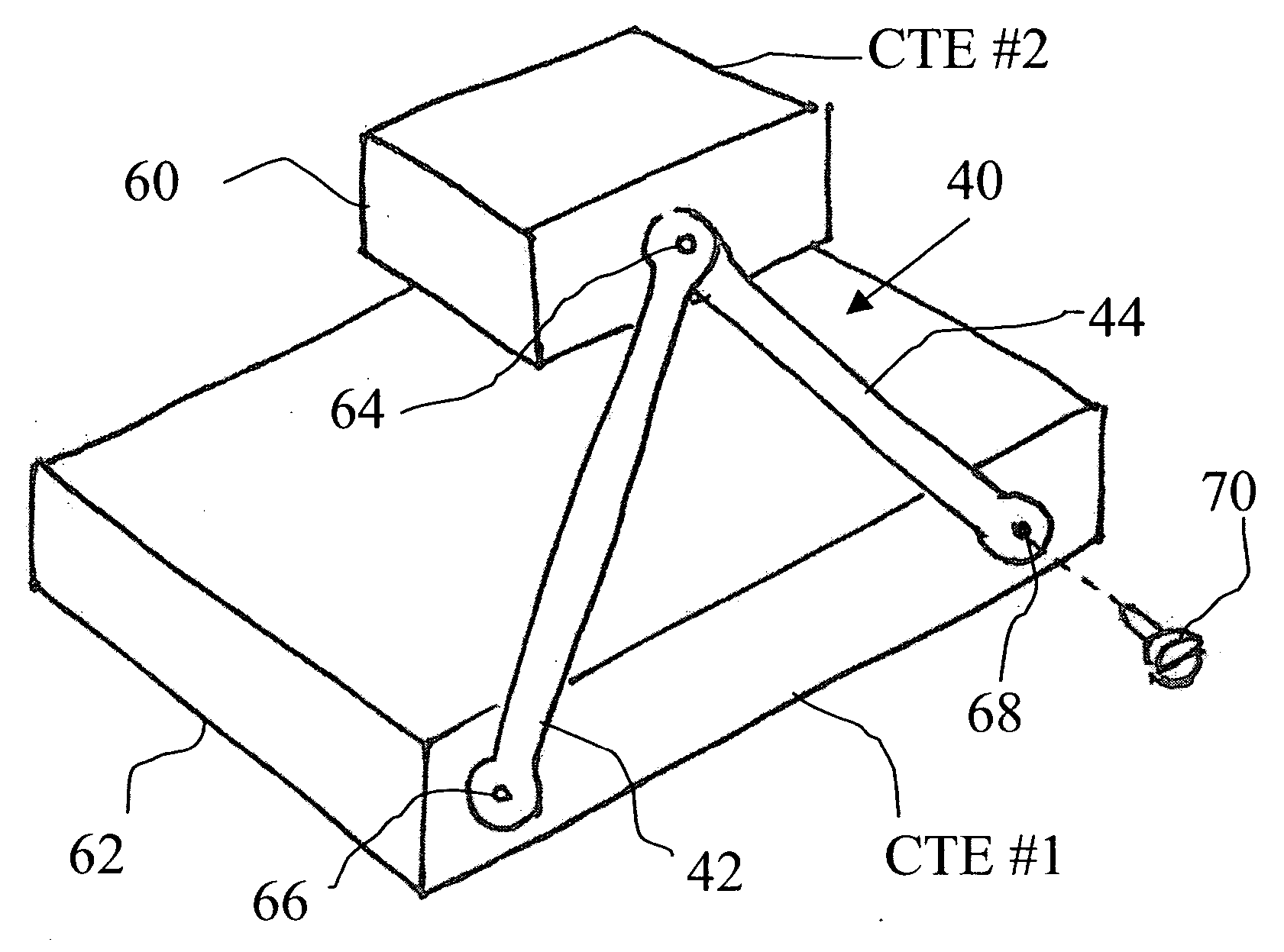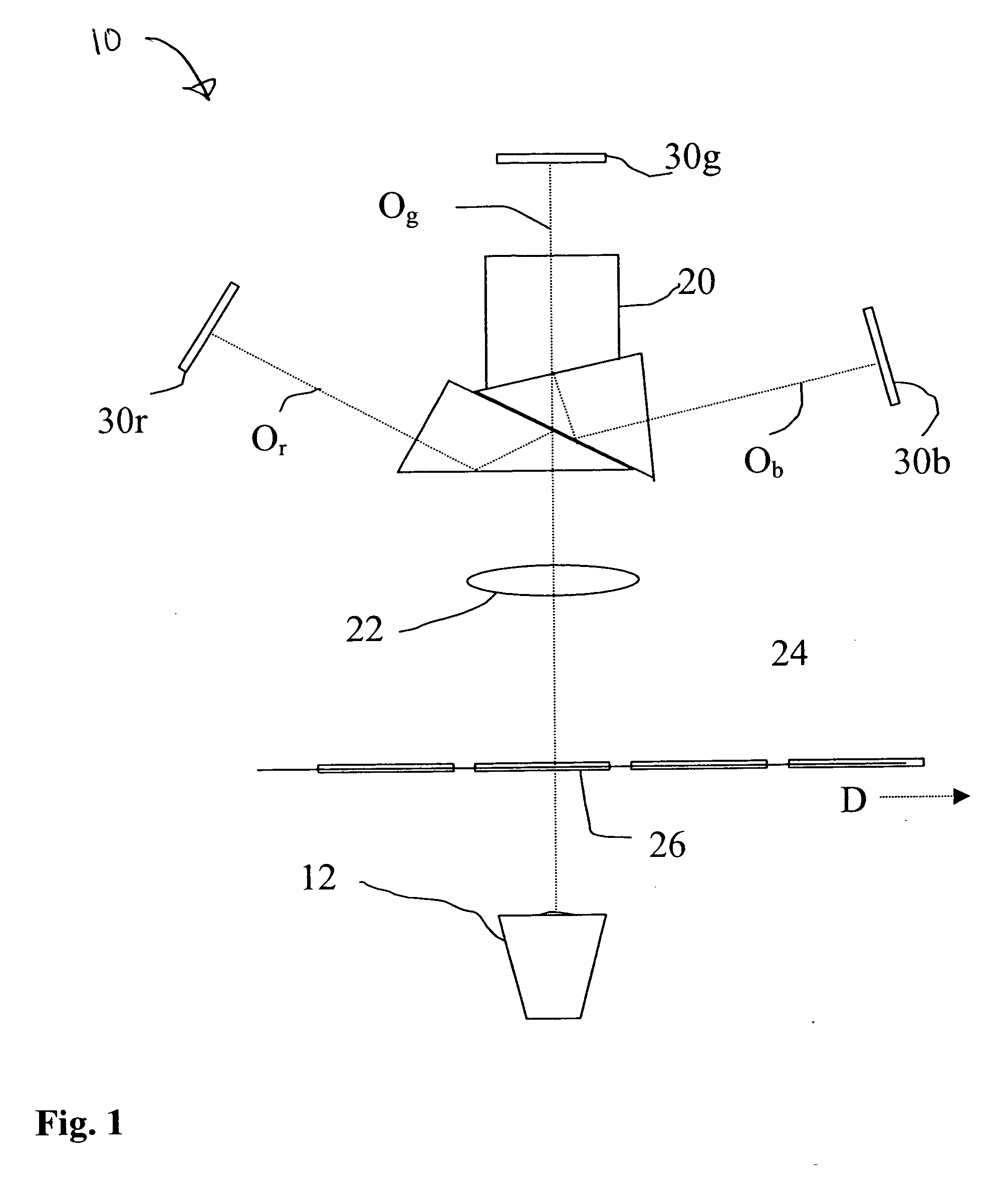Compound coupling
- Summary
- Abstract
- Description
- Claims
- Application Information
AI Technical Summary
Benefits of technology
Problems solved by technology
Method used
Image
Examples
Embodiment Construction
[0037] The present description is directed in particular to elements forming part of, or cooperating more directly with, apparatus in accordance with the invention. It is to be understood that elements not specifically shown or described may take various forms well known to those skilled in the art.
[0038] Referring to FIG. 2a, there is shown the basic arrangement of components served by a flexure coupling 40 of the present invention. For simplicity, only one flexure coupling 40 is shown in FIG. 2a. Flexure coupling 40 is part of the compound coupling used to mount a component 60 to a base 62 or other support structure, such as a chassis plate, for example. In a preferred embodiment, flexure coupling 40 comprises a pair of struts 42, 44 that extend from mount points 66 and 68 on base 62 to a mount point 64 on component 60. A fastener 70, such as a screw or bolt, is typically used to attach struts 42, 44 to mount points 64, 66, 68. In the configuration of FIG. 2a, flexure coupling 40...
PUM
| Property | Measurement | Unit |
|---|---|---|
| Structure | aaaaa | aaaaa |
| Adhesivity | aaaaa | aaaaa |
Abstract
Description
Claims
Application Information
 Login to View More
Login to View More - R&D
- Intellectual Property
- Life Sciences
- Materials
- Tech Scout
- Unparalleled Data Quality
- Higher Quality Content
- 60% Fewer Hallucinations
Browse by: Latest US Patents, China's latest patents, Technical Efficacy Thesaurus, Application Domain, Technology Topic, Popular Technical Reports.
© 2025 PatSnap. All rights reserved.Legal|Privacy policy|Modern Slavery Act Transparency Statement|Sitemap|About US| Contact US: help@patsnap.com



